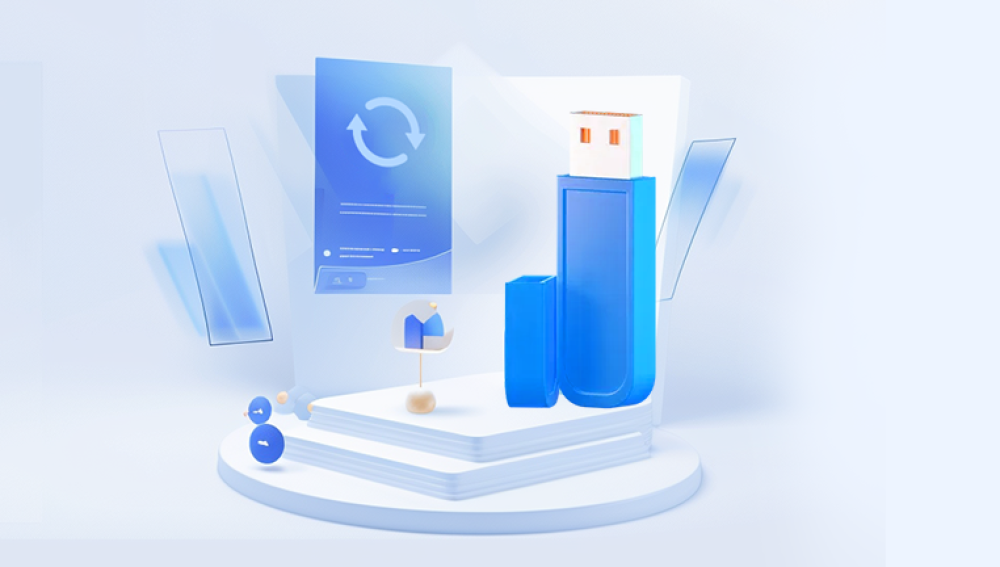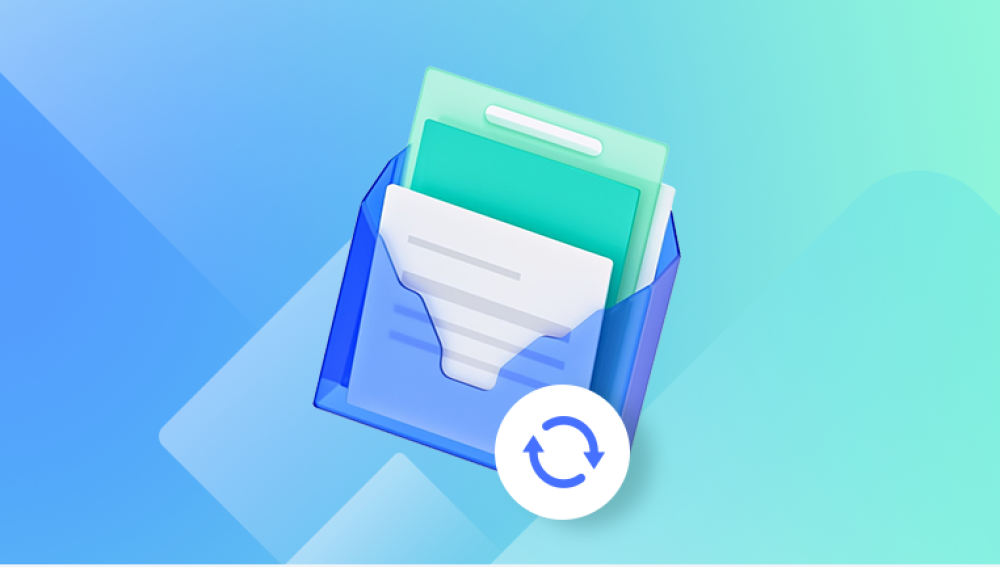These compact devices, no bigger than a thumb, serve as lifelines for students, professionals, and everyday users alike. Yet, few tech experiences are more exasperating than inserting a USB flash drive into your computer and seeing nothing.
No familiar "ding" of recognition. No pop-up. No drive letter in Windows Explorer. Nothing. Your USB flash drive, once a reliable partner, now sits silently and invisibly, leaving you in a state of panic and confusion.
Why isn’t it showing up? Did it get corrupted? Is the data gone forever?
You're not alone. USB flash drives can stop being recognized for several reasons. The issue might stem from logical errors like a corrupted file system, outdated drivers, or partition problems. Or it could be physical damage bent USB connectors, water damage, or even NAND memory failure.

But here's the good news: unrecognized doesn’t always mean unrecoverable. There are numerous methods, ranging from simple to advanced, that can help you retrieve the precious data from an unrecognized USB flash drive. Whether you're a tech novice or someone with a bit of technical know-how, this guide will walk you through the various causes, solutions, and recovery methods.
By the end, you'll not only understand what went wrong but also be equipped with practical tools and steps to rescue your files or at least know when it's time to hand things over to a pro.
Let’s begin the journey from “not recognized” to “recovered and restored.”
Part 1: Common Reasons a USB Flash Drive Isn't Recognized
Before jumping into recovery steps, it's important to understand why a USB drive might not be recognized in the first place. Here are the most common culprits:
1. Driver Issues
Your computer relies on drivers to communicate with USB devices. If the driver is outdated, corrupted, or missing, your USB might not show up.
2. File System Corruption
If the file system of the flash drive gets corrupted (due to improper removal, virus attack, or interrupted writes), the OS might fail to read it.
3. Drive Letter Conflicts
Sometimes, Windows may not assign a drive letter automatically, leading to an invisible USB in Explorer.
4. Partition Table Errors
Without a proper partition, the OS won’t recognize the file structure—making the drive look “empty” or unallocated.
5. Physical Damage
Dropped drives, bent connectors, and exposure to moisture can cause electrical or mechanical failure.
6. Power Supply Issues
Insufficient power from the USB port can prevent the flash drive from operating correctly—common with unpowered USB hubs.
7. Malware and Viruses
Malicious code can make a USB unreadable or hide files, creating the illusion of a blank or unrecognized drive.
8. Incompatible File System
If the USB was formatted on a different operating system (e.g., Linux with ext4), it may not be recognized by Windows or macOS.
9. Wear and Tear
Flash drives have limited write/erase cycles. A worn-out drive might become unreadable.
Part 2: Initial Troubleshooting Steps (500 words)
Before diving into advanced methods, try the following simple checks:
1. Try Another USB Port
Sometimes the issue is with the port itself. Try plugging the USB drive into another port or computer.
2. Check Disk Management (Windows)
Press Win + X → Choose "Disk Management"
Look for your USB drive. It might be there but not initialized or have no drive letter.
3. Assign a Drive Letter
If found in Disk Management:
Right-click the volume → “Change Drive Letter and Paths” → Add a new letter.
4. Use Device Manager
Open Device Manager (Win + X → Device Manager)
Expand “Universal Serial Bus controllers” or “Disk drives”
Right-click the USB → Update or uninstall and reinstall the driver
5. Run Hardware Troubleshooter
Go to Settings → Update & Security → Troubleshoot → Hardware & Devices
6. Test on Another Computer
If it works elsewhere, the problem is likely with the original system, not the drive.
Part 3: Data Recovery Methods
Drecov Data Recovery offers a powerful yet user-friendly solution for recovering lost data from USB flash drives that are not recognized by your computer. Whether your USB drive has been corrupted, formatted, or has encountered a system error, Drecov Data Recovery can help retrieve files quickly and efficiently.
When your USB flash drive isn’t showing up or is inaccessible, Panda scans deep into the drive's sectors to locate hidden, lost, or deleted files. It supports a wide range of file formats, including documents, photos, videos, and more. The software can detect and recover data even from drives with file system errors, RAW formats, or unassigned drive letters.
Using Panda is simple: plug in the USB (even if it doesn’t appear in File Explorer), launch the software, select the external device, and begin the scan. After the scan completes, you can preview recoverable files and restore them to a safe location.
Steps:
Install the software.
Launch and scan the unrecognized USB (if it's at least visible at the hardware level).
Preview and select files for recovery.
Save recovered files to a different drive.
Method 2: Use CHKDSK
This command can fix file system errors.
Open Command Prompt as Admin.
Type:
bash
chkdsk X: /f /r /x
Replace X: with the correct drive letter (if visible).
Note: Do not use if you plan to use recovery software afterward—it can overwrite file structures.
Method 3: Use DiskPart to Clean & Format
Only if you're willing to wipe the drive and start fresh (data will be lost):
Open Command Prompt.
Type:
pgsql
diskpart list disk select disk # clean create partition primary format fs=ntfs assign
Method 4: Recover with Linux
Linux can sometimes read drives Windows cannot.
Boot into a Linux live USB (e.g., Ubuntu).
Plug in the USB drive.
Use "Disks" or GParted to check for partitions.
Copy files to another drive.
Part 4: When the USB Is Physically Damaged
If the drive isn’t even showing in Device Manager or Disk Management, and you don’t hear or feel activity, it could be a hardware issue.
Signs of Physical Damage:
No LED lights
Bent or broken USB connector
Computer doesn’t register any new device
Drive feels unusually hot
Options:
1. Professional Data Recovery Services
If the data is critical, contact services like:
DriveSavers
Ontrack
CBL Data Recovery
They can open the drive in a cleanroom environment and extract memory chips.
2. Chip-off Recovery
Involves removing NAND flash chips and reading them with specialized tools. Only performed by professionals.
3. Donor Board Replacement
If the PCB is damaged, a compatible board can be swapped in—but it’s risky without technical knowledge.
Do Not:
Try DIY soldering unless you're experienced
Bake your USB drive (yes, some people do that)
Part 5: Prevention Tips for the Future
To avoid future USB recognition issues and data loss:
1. Always Safely Eject the Drive
Improper removal can corrupt the file system.
2. Back Up Regularly
Use cloud storage or external drives to back up USB contents.
3. Use Quality Drives
Avoid no-name brands that may fail quickly.
4. Avoid Excessive Write Cycles
Don't use flash drives as permanent storage or for running applications.
5. Keep Drivers Updated
Ensure your system’s USB drivers are current.
6. Scan for Malware
Regularly run antivirus scans, especially after using public/shared computers.
7. Avoid Physical Damage
Store your USB in a protective case, avoid dropping it, and don’t bend the connector.
An unrecognized USB flash drive can send shivers down your spine especially when it contains irreplaceable documents or sentimental media. But just because your computer can’t see the drive doesn’t mean your data is lost forever.




